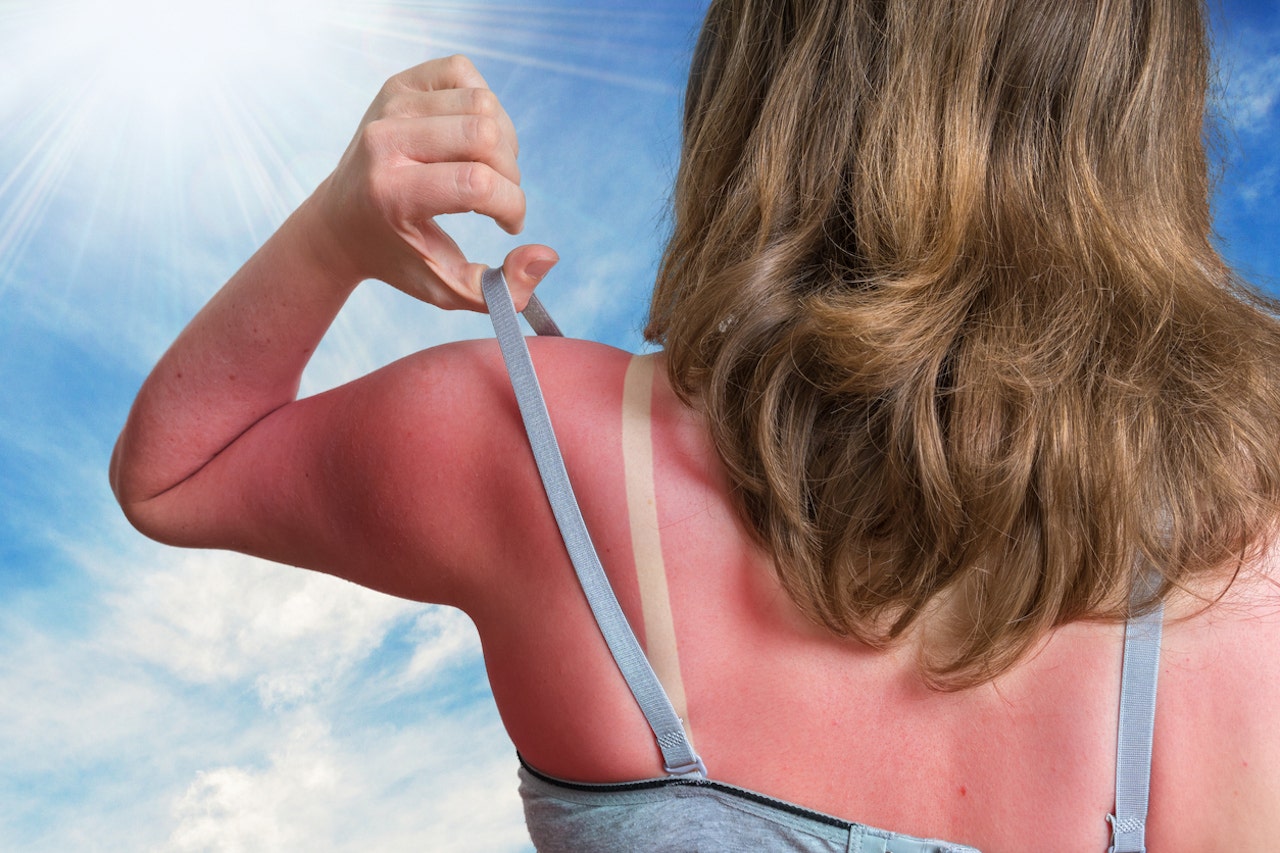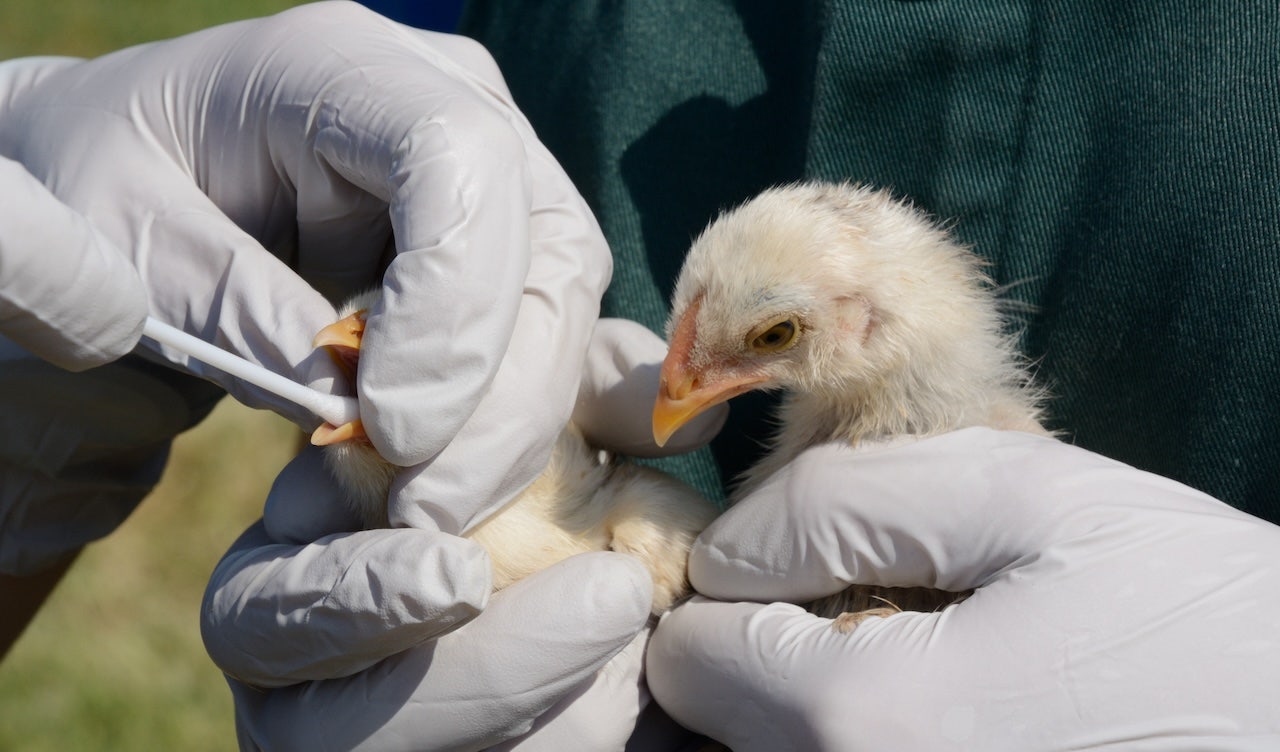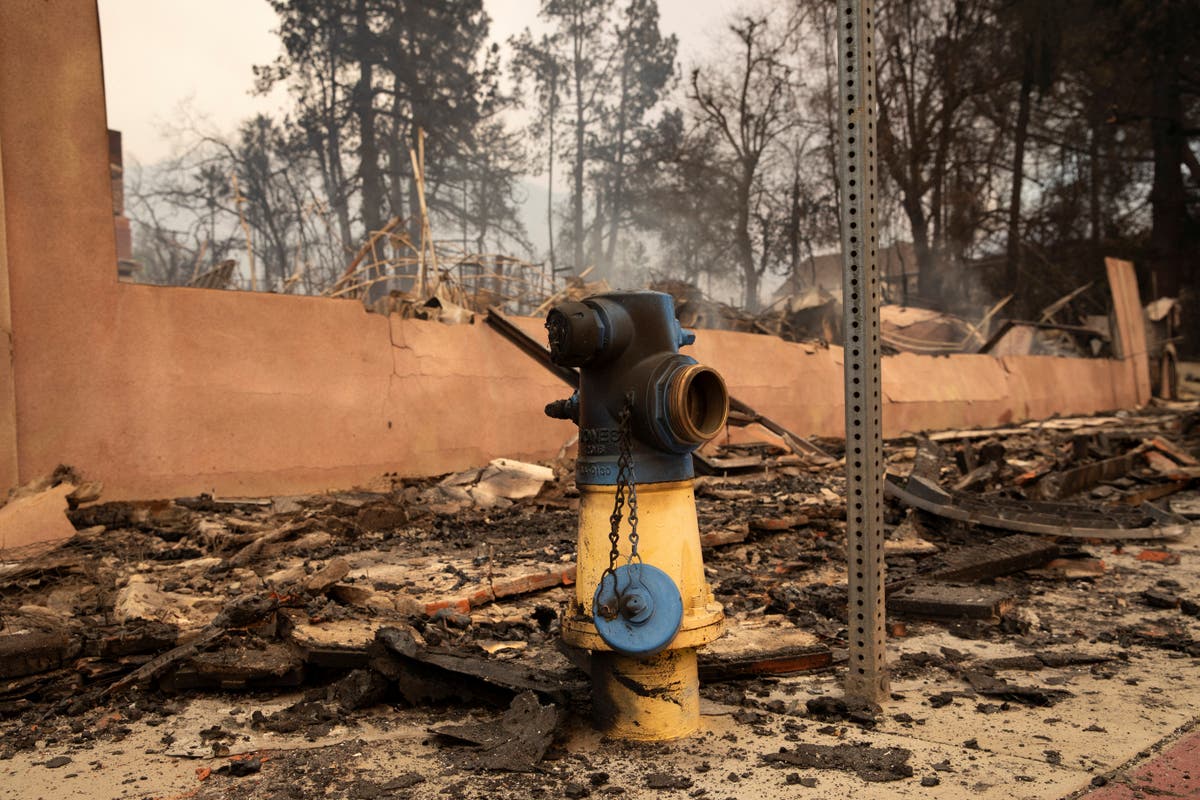Health
Sunburn SOS: 7 tips to soothe your sun-damaged skin, according to a wellness expert

With the arrival of summer comes more time spent outdoors, which can increase the risk of sunburn.
More than one out of every three adults experienced a sunburn last year, according to a survey by the American Academy of Dermatology.
If not treated properly, sunburn can lead to severe skin damage and increase the risk of skin cancer, experts warn.
HOW TO WEAR SUNSCREEN THE RIGHT WAY: YOUR GUIDE TO SPF
Angela Rosoff, a San Francisco-based wellness and beauty expert at the face yoga app Luvly, shared the following seven main remedies to treat sun-damaged skin.
1. Soak the pain away
“Should you spend a little too long in the sun, head inside and take a cold shower to wash away any skin irritants, such as chlorine or salt water,” Rosoff told Fox News Digital.
“While your skin is still damp, apply a moisturizer containing aloe vera directly to the burn, allow it to soak in, then seal it in with a layer of fast-absorbing jojoba oil,” an expert recommended. (iStock)
Next, she recommends filling a bath with eight to ten black tea bags — or a cup of oats — and waiting for the water to turn dark amber.
ASK A DOCTOR: ‘HOW CAN I PREVENT SCARRING FROM BUG BITES AND POISON IVY?’
“With the water full of natural compounds known for reducing inflammation, a quick soak will make your skin feel better in no time,” she said.
If that doesn’t work, she suggests trying green tea, matcha powder or rice water.
2. Moisturize constantly
“While your skin is still damp, apply a moisturizer containing aloe vera directly to the burn, allow it to soak in, then seal it in with a layer of fast-absorbing jojoba oil,” Rosoff said.
Aloe vera is packed full of water and anti-inflammatory compounds, making it a powerful remedy against the aches and pains of sunburn, the expert noted.

More than one out of every three adults experienced a sunburn last year, according to a survey by the American Academy of Dermatology. (iStock)
“Keep a healthy stock in the fridge during the summer months, and reach for it whenever your skin gets hot, red or dry,” she advised.
“For the intimate areas that can’t be slathered in cream, such as your eyes or lips, don’t underestimate the soothing abilities of the humble cucumber slice.”
3. Ease the pain
At the first sign of sunburn, the best move is to take an anti-inflammatory pain medication, such as ibuprofen, according to Rosoff.
“Treat your current suffering as a lesson learned.”
“Not only will it provide immediate relief, but it will help to reduce the swelling to aid your skin’s recovery.”
4. Stay hydrated
Sunburn often coincides with symptoms such as a dry mouth, fatigue or lightheadedness, according to Rosoff.
“These are sure signs of dehydration, caused by moisture being drawn out of your body to treat the burns on your skin’s surface,” she told Fox News Digital.

It’s important to protect the skin every time you go outside, incorporating a high-SPF sunscreen moisturizer into your daily skincare routine. (iStock)
“A supply of ice-cold water and the occasional sports drink will help to rehydrate the body and replenish electrolytes, easing your symptoms and speeding up recovery.”
5. Keep cool
Sweating can make sunburn unbearable, so it can be helpful to throw open the windows and doors and let cool air flood the room.
“Wear loose, breathable clothing made from cotton, linen or silk to let your skin breathe,” Rosoff recommended.
TATTOOS MAY INCREASE RISK OF DEVELOPING LYMPHOMA, ALARMING NEW STUDY FINDS
If you have access to air conditioning, she advised switching it to the coldest setting and pointing it directly at the burned area for extra relief.
“If it’s too hot inside, you might be tempted to sit out in the open air, but don’t,” she advised. “Even if you’re in the shade, the slightest bit of sun exposure will set your recovery back.”
6. Avoid peeling and popping
“Your skin is bound to blister and peel — it’s your body’s way of keeping the healthy skin underneath hydrated while it rids itself of the damaged cells,” Rosoff said.
CLICK HERE TO SIGN UP FOR OUR HEALTH NEWSLETTER
“It’s essentially your own natural healing system — so, as uncomfortable as it is, you need to let your body get on with the job.”

If you have access to air conditioning, an expert advised switching it to the coldest setting and pointing it directly at the burned area for extra relief. (iStock)
Popping the blisters will only make the recovery more painful and expose your body to all sorts of harmful bacteria, the expert warned.
7. Protect yourself
“Too much exposure can leave you with far worse things to worry about than burns and blisters,” Rosoff warned.
“Repeat sun damage can have irreversible ill effects on our skin, causing it to separate from the body’s tissue and sag, and our health, causing skin cancer.”
It’s important to protect the skin every time you go outside, incorporating a high-SPF sunscreen moisturizer into your daily skincare routine and wearing clothing that guards against UV rays, Rosoff recommended.
For more Health articles, visit www.foxnews/health.
“Treat your current suffering as a lesson learned.”

Health
How The Great British Bake Off Host Alison Hammond Lost 150 Lbs Naturally

Sign Up
Create a free account to access exclusive content, play games, solve puzzles, test your pop-culture knowledge and receive special offers.
Already have an account? Login
Use left and right arrow keys to navigate between menu items.
Use escape to exit the menu.
Health
One state leads country in human bird flu with nearly 40 confirmed cases

A child in California is presumed to have H5N1 bird flu, according to the San Francisco Department of Public Health (SFDPH).
As of Dec. 23, there had been 36 confirmed human cases of bird flu in the state, according to the California Department of Public Health (CDPH).
This represents more than half of the human cases in the country.
LOUISIANA REPORTS FIRST BIRD FLU-RELATED HUMAN DEATH IN US
The latest pediatric patient, who lives in San Francisco, experienced fever and conjunctivitis (pink eye) as a result of the infection.
The unnamed patient was not hospitalized and has fully recovered, according to the SFDPH.
A child in California is presumed to have H5N1 bird flu, according to the San Francisco Department of Public Health. (iStock)
The child tested positive for bird flu at the SFDPH Public Health Laboratory. The U.S. Centers for Disease Control and Prevention (CDC) will perform additional tests to confirm the result.
CLICK HERE TO SIGN UP FOR OUR HEALTH NEWSLETTER
It is not yet known how the child was exposed to the virus and an investigation is ongoing.
“I want to assure everyone in our city that the risk to the general public is low, and there is no current evidence that the virus can be transmitted between people,” said Dr. Grant Colfax, director of health, in the press release.
BIRD FLU PATIENT HAD VIRUS MUTATIONS, SPARKING CONCERN ABOUT HUMAN SPREAD
“We will continue to investigate this presumptive case, and I am urging all San Franciscans to avoid direct contact with sick or dead birds, especially wild birds and poultry. Also, please avoid unpasteurized dairy products.”
Samuel Scarpino, director of AI and life sciences and professor of health sciences at Northeastern University in Boston, is calling for “decisive action” to protect individuals who may be in contact with infected livestock and also to alert the public about the risks associated with wild birds and infected backyard flocks.

An infectious diseases expert called for “decisive action” to alert the public about the risks associated with wild birds and infected backyard flocks. (iStock)
“While I agree that the risk to the broader public remains low, we continue to see signs of escalating risk associated with this outbreak,” he told Fox News Digital.
Experts have warned that the possibility of mutations in the virus could enable person-to-person transmission.
“While the H5N1 virus is currently thought to only transmit from animals to humans, multiple mutations that can enhance human-to-human transmission have been observed in the severely sick American,” Dr. Jacob Glanville, CEO of Centivax, a San Francisco biotechnology company, told Fox News Digital.

As of Jan. 10, there have been a total of 707 infected cattle in California, per reports from the California Department of Food and Agriculture. (iStock)
“This highlights the requirement for vigilance and preparation in the event that additional mutations create a human-transmissible pandemic strain.”
As of Jan. 10, there have been a total of 707 infected cattle in California, per reports from the California Department of Food and Agriculture (CDFA).
For more Health articles, visit www.foxnews.com/health
In the last 30 days alone, the virus has been confirmed in 84 dairy farms in the state.
Health
Chronic Pain Afflicts Billions of People. It’s Time for a Revolution.

“In the beginning, everyone thought they were going to find this one breakthrough pain drug that would replace opioids,” Gereau said. Increasingly, though, it’s looking like chronic pain, like cancer, could end up having a range of genetic and cellular drivers that vary both by condition and by the particular makeup of the person experiencing it. “What we’re learning is that pain is not just one thing,” Gereau added. “It’s a thousand different things, all called ‘pain.’”
For patients, too, the landscape of chronic pain is wildly varied. Some people endure a miserable year of low-back pain, only to have it vanish for no clear reason. Others aren’t so lucky. A friend of a friend spent five years with extreme pain in his arm and face after roughhousing with his son. He had to stop working, couldn’t drive, couldn’t even ride in a car without a neck brace. His doctors prescribed endless medications: the maximum dose of gabapentin, plus duloxetine and others. At one point, he admitted himself to a psychiatric ward, because his pain was so bad that he’d become suicidal. There, he met other people who also became suicidal after years of living with terrible pain day in and day out.
The thing that makes chronic pain so awful is that it’s chronic: a grinding distress that never ends. For those with extreme pain, that’s easy to understand. But even less severe cases can be miserable. A pain rating of 3 or 4 out of 10 sounds mild, but having it almost all the time is grueling — and limiting. Unlike a broken arm, which gets better, or tendinitis, which hurts mostly in response to overuse, chronic pain makes your whole world shrink. It’s harder to work, and to exercise, and even to do the many smaller things that make life rewarding and rich.
It’s also lonely. When my arms first went crazy, I could barely function. But even after the worst had passed, I saw friends rarely; I still couldn’t drive more than a few minutes, or sit comfortably in a chair, and I felt guilty inviting people over when there wasn’t anything to do. As Christin Veasley, director and co-founder of the Chronic Pain Research Alliance, puts it: “With acute pain, medications, if you take them, they get you over a hump, and you go on your way. What people don’t realize is that when you have chronic pain, even if you’re also taking meds, you rarely feel like you were before. At best, they can reduce your pain, but usually don’t eliminate it.”
A cruel Catch-22 around chronic pain is that it often leads to anxiety and depression, both of which can make pain worse. That’s partly because focusing on a thing can reinforce it, but also because emotional states have physical effects. Both anxiety and depression are known to increase inflammation, which can also worsen pain. As a result, pain management often includes cognitive behavioral therapy, meditation practice or other coping skills. But while those tools are vital, it’s notoriously hard to reprogram our reactions. Our minds and bodies have evolved both to anticipate pain and to remember it, making it hard not to worry. And because chronic pain is so uncomfortable and isolating, it’s also depressing.
-

 Politics1 week ago
Politics1 week agoCarter's judicial picks reshaped the federal bench across the country
-

 Politics1 week ago
Politics1 week agoWho Are the Recipients of the Presidential Medal of Freedom?
-

 Health1 week ago
Health1 week agoOzempic ‘microdosing’ is the new weight-loss trend: Should you try it?
-

 World1 week ago
World1 week agoSouth Korea extends Boeing 737-800 inspections as Jeju Air wreckage lifted
-
/cdn.vox-cdn.com/uploads/chorus_asset/file/25822586/STK169_ZUCKERBERG_MAGA_STKS491_CVIRGINIA_A.jpg)
/cdn.vox-cdn.com/uploads/chorus_asset/file/25822586/STK169_ZUCKERBERG_MAGA_STKS491_CVIRGINIA_A.jpg) Technology4 days ago
Technology4 days agoMeta is highlighting a splintering global approach to online speech
-

 News1 week ago
News1 week agoSeeking to heal the country, Jimmy Carter pardoned men who evaded the Vietnam War draft
-

 Science1 day ago
Science1 day agoMetro will offer free rides in L.A. through Sunday due to fires
-

 News1 week ago
News1 week agoTrump Has Reeled in More Than $200 Million Since Election Day














